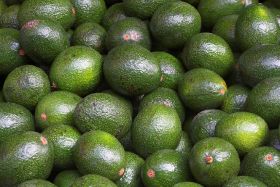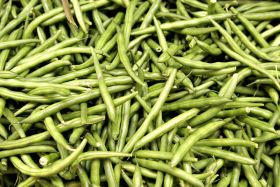
The FPJ Big 50 Products ranks the 50 best-selling fresh fruit and vegetable products by sales value, using Kantar Worldpanel data for the 52 w/e 21 May 2017.
21. Avocados

Value: £168.9m (+29%) Volume 38.5m kg (+22%)
Stellar growth for star performer
Avocado is the gift that keeps on giving for growers and the only question is how long the phenomenal sales uplift can be maintained. For the second year in a row, the fruit is the fastest-growing product in the FPJ Big 50, and with its ever-expanding usage in foodservice there would appear to be more headroom yet.
In addition to its health benefits, sales are being driven by avos’ versatility, according to Mark Everett, business unit manager at Worldwide Fruit. He points out that it can be found in high-end sandwiches, ready prepared, sliced and diced and within salads, as well as in both sweet and savoury dishes.
Prices have been extremely high on the global market, driven by huge demand from the US in particular, and that has led to reports of growers flocking to plant, but Rob Cullum, managing director of Pacific Produce, warns that reacting to price spikes is dangerous and his company will continue to grow in steady volumes rather than follow a gold rush.
Cullum believes the development of a long shelf-life guacamole that both tastes and looks great is the ‘holy grail’ for the category and would give an even bigger boost to sales.
Even without it, and with millennials showing huge appetite for the crop, this success story shows no sign of waning just yet.

Despite this, Andrew Green, of Herefordshire grower AS Green, says this year’s bean crop is “exceptional”. “It’s the best crop we’ve ever had,” he says. “We had a cool spring and hot early summer, but it’s very unusual to see such high volumes. We are between 25 and 30 per cent up.” Volumes are going up just as the holiday season begins, says Green, meaning it may be difficult to shift the crop, but retail promotions are in place at the moment and he is hopeful of strong sales.
According to Edward Cunynghame, commercial manager at Kenyan exporter AAA Growers, there has been a shake up in bean supply with new entrants such as Ethiopia and Morocco emerging as competitors to Kenya. “This deters some farmers from increasing their production,” he says.
Cunynghame says Kenya’s niche is adding value in bean processing as the country benefits from lower labour costs. “Various products can be manufactured by machines in UK, but where manual labour is required, such as stir fry packs being arranged by hand, then Kenya can add value,” he explains.
23. Melons

Melon growth continues as Brexit bites
Following the Brexit referendum and subsequent currency movements against the euro and the dollar, both northern and southern hemisphere sources “have come under huge pressure to reduce costs wherever possible to reduce the inflation effect,” says Scott Davies of Vidafresh. To make matters worse, Davies describes last year’s Central American season as a “huge challenge right from seeding through to main season supply”.
Consequently, “we really could have seen sales dip”, Davies says, but the category continues to progress at a time when quality and varietal development “has never been better”. Much of the sales growth has been seen in watermelons, which continue to have a renaissance thanks, in part, to positive press coverage of the product’s health benefits.
Looking forward, favourable growing conditions in June and early July of this year have driven “tremendous” year-on-year sale growth, according to Davies, boding well for the product’s 2017 sales performance.
24. Cauliflower

A flower among brassicas
A trend for cauliflower NPD seen in the likes of steaks, couscous and rice began in the US and has rubbed off in the UK, according to managing director of Kent grower Veg UK, Julian Pitts, who believes the category is catching up with kale in terms of popularity.
Meanwhile, Cornish grower Greville Richards, of Southern England Farms, says sales are good, and the revival in cauliflower has been seen across all channels, whether that’s wholehead or processing. “I think it’s all coming from the general public being told about the health benefits of veg,” he says. “The price has gone up a bit on shelves and we’re seeing an increase in sales. I’m convinced people are trying to eat more healthily.”
Weather issues have hampered the category slightly this year, with a late start in Cornwall and then a crop flush that prompted Tesco to step in to help shift extra volumes. “What will be interesting is where cauliflower features on household and restaurant menus in autumn, as sales are traditionally lower over summer when people are barbecuing and schools are on holiday,” says Richards. For now, though, cauliflower is riding the crest of a wave.

Catastrophic season hits cherry sales
After several years of booming consumer demand accompanied by double-digit sales growth, last year’s bad harvest was something of a wake-up call for the sector, causing a marked drop in cherry sales.
With British volumes plummeting from roughly 3,000 to 2,000 tonnes in 2016, according to Darren Matschull of J.O. Sims, the main cause of the collapse was a difficult UK growing season – a mild winter, followed by a wet and cold spring, cut the season short and reduced the harvest.
Britain wasn’t the only country to experience low volumes, however, with Chile and Spain reducing their exports to the UK. And given that the UK’s cherry market remains driven by supply, this had a major impact on sales. “The cherry market in the UKis still immature,” explains Berry Gardens’ retiring MD Nicholas Marston. “If supply is short, the market contracts; but if we deliver good volumes of high-quality fruit, it will grow rapidly.”
Fortunately for the sector, this summer’s warm weather looks set to boost yields, which should see the category return to healthy growth next year. In July, Tesco announced it would buy an extra 80 tonnes of product a week to prevent excess volumes going to waste. But this could well drive down prices, with the retailer beginning to sell 1kg trays of cherries for just £4 each.



